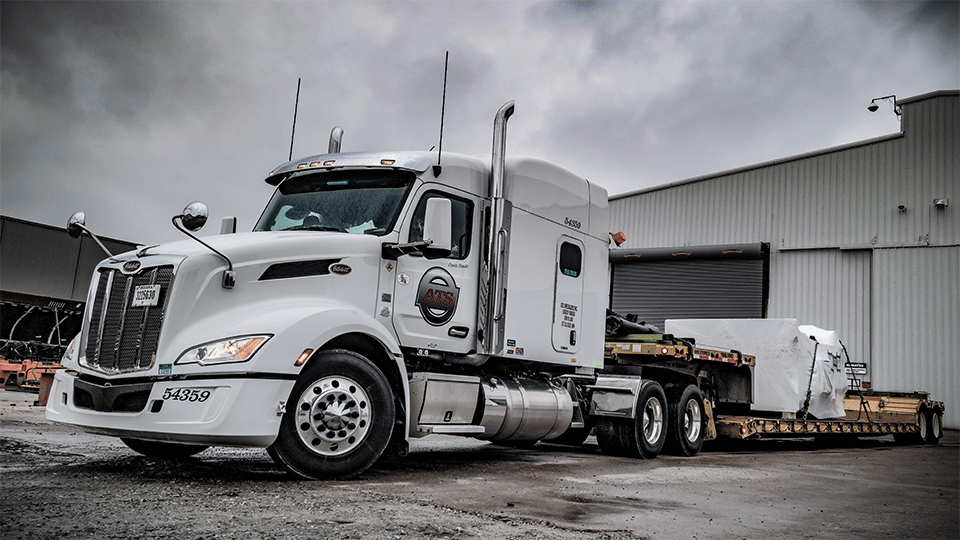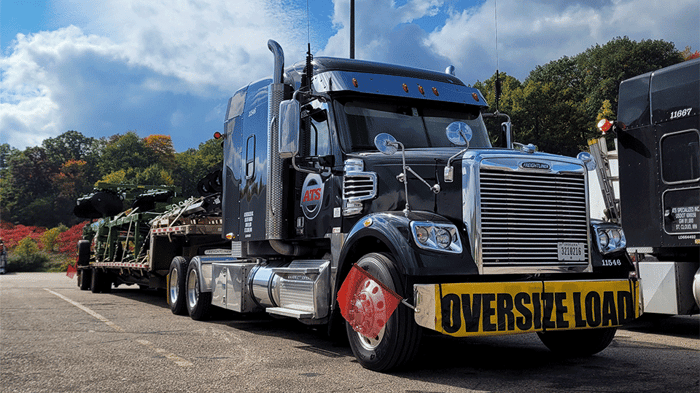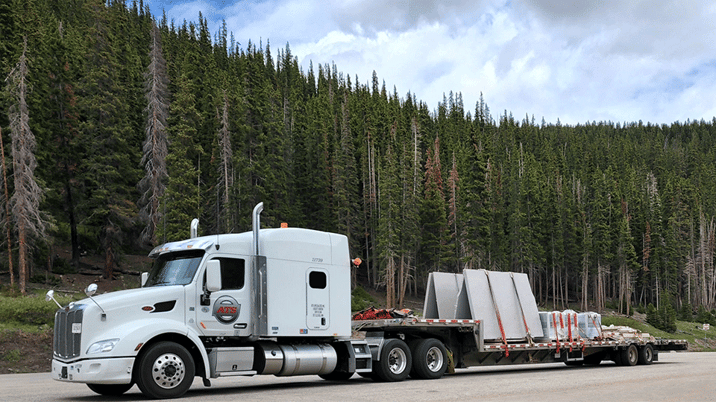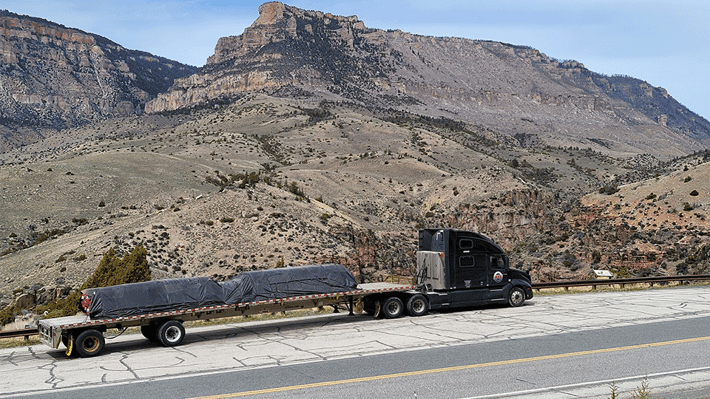
Your job, although straightforward (to keep freight flowing to and from your company’s door) isn’t always simple. Logistics professionals are also charged with overseeing their company’s transportation spending — a role that’s not for the faint of heart.
Since freight shipping is nothing more than a debit on your company’s balance sheet, it’s one of the first places you look to cut costs. Your performance, and perhaps compensation, is measured as such.
Unfortunately, a lot is out of your control in this realm; a wide range of factors influence the freight rates you pay. As a result, it’s not uncommon for people in your role to feel frustrated while struggling to meet the budget set before them.
This has been particularly the case in recent history where spot rates have been incredibly unpredictable.
Although it’s your job to oversee and manage your company’s transportation spending, for the most part, external forces set the price of acquiring transportation services.
You know this. But communicating to your boss why freight rates change — sometimes quite drastically — is difficult. Internally, you’re the freight-rate expert which can sometimes make articulating why your spending shifted so drastically month-over-month in an understandable way more challenging.
This article will help you do so.
Anderson Trucking Service (ATS) has been in business since 1955. Over this period, our internal pricing experts have extended hundreds of thousands of freight quotes for countless commodity types. By remaining plugged into the marketplace for nearly seven decades, we can confidently explain how freight rates are calculated, what influences them and (perhaps most importantly) where your best chances for savings lie.
In this article, you’ll learn how to clearly relay this information to your company’s leadership so they can make confident logistical decisions in the future. Although this article won’t cover every aspect of freight pricing, you’ll find links to tons of related resources as well — use them at your convenience to round out your knowledge.
Topics covered in this article include:
- An overview of how freight rates have fluctuated in recent history
- A breakdown of the nine factors dictating freight rates
- Additional reasons why freight rates may rise
- Ways to save money on your rates
Freight Rate Trends
Spot prices in the dry van, flatbed and refrigerated markets fluctuate regularly. Driven by changes to supply and demand trends across the industry (and various other factors), it’s not uncommon for these rates to change substantially month over month.
Sometimes, rate fluctuations over a period of time within a market are predictable (as is the case with retail peak season in Q4 each year). In other instances, however, spot rates change on a wider scale — affecting the cost of moving freight across the board. You see, the transportation industry, like many others, is cyclical; rates can remain high for years at a time and lower during others.
Over the past eight (or so) years — starting in 2014 — we’ve seen these trends present in a unique way.
To give you a frame of reference for how freight rates can change — when influenced by the factors outlined below — here is a table displaying year-over-year changes to spot rates in each market (nationwide) since 2014:
| Year | Average of Dry Van Rates | Average of Flatbed Rates | Average of Reefer Rates | Average of Total Rates | YoY Changes |
| 2014 | $2.16 | $2.29 | $2.49 | $2.31 | |
| 2015 | $1.86 | $2.05 | $2.16 | $2.05 | -11% |
| 2016 | $1.71 | $1.83 | $2.01 | $1.86 | -9% |
| 2017 | $1.94 | $2.11 | $2.29 | $2.13 | 14% |
| 2018 | $2.23 | $2.46 | $2.59 | $2.46 | 16% |
| 2019 | $1.83 | $2.11 | $2.17 | $2.10 | -15% |
| 2020 | $2.05 | $2.14 | $2.33 | $2.17 | 4% |
| 2021 | $2.68 | $2.87 | $3.14 | $2.89 | 33% |
| 2022 | $2.51 | $3.08 | $2.92 | $2.95 | 2% |
*These numbers represent the average rate-per-mile (RPM) paid by shippers in each of these markets for the listed year.
As this chart indicates, there was a progressive decline in spot rates across the board from 2014-2016. This is the result of a widespread change in the balance between the supply of, and demand for, transportation services over this period.
Conversely, in 2017-2018, rates rose again, hitting higher marks in 2018 than they did in 2014. Starting in 2020, as you may expect, freight rates began a steady uphill climb once more, hitting RPM all-time highs in 2021. This trend has continued, at a much slower pace, through 2022. Most recently, we’ve seen freight rates begin to decline once more.
All of these yearly changes can be tied back to the forces referenced below. However, the more significant spikes/declines — like that of 2021 — result from larger, abnormal shifts.
Related: Common Transportation Industry Market Cycles: What They Are and What They Mean for You
The Main Factors Dictating Daily Transportation Spot Prices
Under normal market conditions, there is a list of factors that together impact the exact price you’ll pay to ship your freight. Those are:
- Your freight’s specifics
- Length of haul (distance)
- Load-to-truck ratios in your origin and destination
- Load volumes in your origin and destination
- The urgency of your shipment
- Your timeline requirements
- Your cargo’s value
- Fuel costs
- Accessorial charges
Here’s an overview of how they each make an impact.
Your Freight’s Specifics
Every shipment is different. Whether it’s weight, commodity type, dimensions, pallet count or any mix of other variables, these specifics dictate the kind of equipment (trailer type, securement) and service type you need.

Often, open-deck shipments have more robust requirements than dry van loads. As a result, shippers with freight requiring these specifics may pay an elevated RPM. For the most part, the more specialized your freight is — requiring specific experience, equipment and planning — the more you should expect to pay.
Related: 8 Tips For Receiving the Most Accurate Spot Quotes Possible
Length of Haul (Distance)
The distance of your freight lane (from A to B) impacts the rate you’re quoted. For trucking companies, fleet productivity is a significant concern. It’s important for carriers to keep their drivers moving and compensated for the work they do.
That’s why the longer your shipment is — requiring drivers to spend more time hauling it — the more you should expect to pay. Though this seems quite obvious, the impact of distance becomes even more important beyond a certain point.
Usually, once a shipment exceeds 500 miles it will take more than one day to finish it –– when accounting for traffic, loading, unloading, etc. In turn, shipments in the 500-800 mile range, which leave drivers with limited hours of service (HOS) upon completion, may be quoted at an elevated rate.
Load to Truck Ratios in Your Origin and Destination
Like any other marketplace, supply and demand drive the price of transportation services. In the trucking industry, “supply” is the number of viable trucking solutions in an area. “Demand” is the number of loads (with similar requirements) that need to be moved at a given time.
Together, the supply of and demand for transportation services in an area create its load-to-truck ratio.
Whenever an origin (the place you’re shipping from) has more trucks in it than shipments, freight rates fall; supply outweighs demand, tipping the scales in each shipper’s favor.
Conversely, if an origin location has fewer trucks in it than loads in need of transport, spot prices rise as the value of trucking services increases due to scarcity.
This pattern rings true on the destination side of this equation too. In the majority of instances, destinations with more loads than trucks cost less to ship to than those with fewer shipments. Since carriers know they’ll have an easier time securing their next shipment, heading to these destinations is more attractive.
Related Content: Load-To-Truck Ratios an Overview of How They Impact Your Freight Rates
Freight Volumes at Your Origin and Destination
While load-to-truck ratios impact your freight rates, the total volume of freight in your origin and destination locations is just as important. Often, a location's load-to-truck ratio isn’t representative of the opportunity an individual carrier has within it.
For example, a town with a 4:1 ratio might, in reality, have eight shipments and two trucks — making it highly unlikely for your carrier to win any of those eight shipments. In this scenario, a 4:1 ratio in your destination location (though visibly strong) doesn’t qualify it as “attractive” to your carrier. Instead, this low freight volume will probably raise your price.
Alternatively, a destination’s 4:1 ratio might represent 10,000 loads and 2,500 trucks.
This presents an entirely different predicament for your carrier, making it highly probable they’ll secure their next load quickly. In the end, higher freight volume in a destination/origin location creates more opportunities for trucking companies — lowering rates going into them and raising them coming out.
So, if you consistently ship to a destination with low(er) freight volumes, or from an origin with vast freight demands, your rates are representative of this.
Related: How Does Your Freight’s Origin Impact Your Final Shipping Price?
The Urgency of Your Shipment
Time is money in the transportation industry. For this reason, the less time you have, the more you should expect to pay. Same-day shipments (when a load needs to be picked up within 24 hours of initial request) can be far more expensive than shipments with longer lead time.
Since trucking companies schedule their trucks out days into the future, it can be really challenging (and expensive) to lock down a solution on short notice. With all else remaining equal, an urgent shipment may cost as much as 50 percent more than one with 24-72 hours' notice.
Your Timeline Requirements
Your rate will change depending on when your shipment needs to be picked up and delivered. The primary segments of your “timeline” are:
- The day of the week for pickup
- The day of the week for delivery
- The time of day and date for pickup
- The time of day and date for delivery
Certain timeline requirements are harder to meet than others — driving up the cost of shipping freight with them. Shipping a short-mile load (1,000 miles or less) over the weekend with a Friday morning pickup appointment and a Monday morning delivery appointment can get really expensive.
Since a truck driver can easily cover these distances in two or fewer days, asking them to sit on it over the weekend will increase your rates substantially to compensate them for their time.
This is only one example of this. That said, your timeline requirements — particularly if you have rigid appointment times will affect your pricing.
Related Content: A Comparison of Freight Pickup and Delivery Appointments (Morning, Midday, Afternoon and Evening)
Your Cargo’s Value
The dollar value of your shipment is yet another factor influencing the final rate you pay to move it. Once again, this comes back to supply and demand.
You see, the vast majority of shipments fall below $100,000 in value. For this reason, most carriers hold insurance to this level, but not beyond, on each truck.
Shipments exceeding $100,000 in value have fewer viable transportation solutions to select from. In turn, the limited pool of carriers equipped with cargo coverage in the realm of $250,000, $500,000 or $1,000,000 increases freight pricing. This is especially true in locations with a lot of high-value freight to move.
Related Content: Why Does High-Value Freight Cost More to Ship? [And How to Save]
Fuel Costs
Fuel is one of the largest expenses associated with running a trucking company. That said, this expense usually trickles down to shippers in the form of a fuel surcharge. Though there are multiple ways for you, as a shipper, to manage your fuel surcharge schedules, it’s an uncontrollable piece of your transportation spend.
When distillate fuel reserves fall — as they have recently — and/or demand for fuel outpaces supply, diesel prices rise. This price increase directly impacts your freight rates.
Related: An Explanation of How Rising Fuel Prices Affect Transportation (+3 Budgeting Tips)
Accessorial Charges
Accessorials fees are the costs associated with ancillary transportation-industry services. Tarp charges are one example of this. Tarping an open-deck shipment can be a time and labor-intensive process for truck drivers, making it important to compensate them for this effort. As such, should you need tarping on freight traveling by flatbed, step deck, hot shot or another open-deck trailer, expect to pay for it.

Another example is “stop charges,” commonly levied on full-truckload multi-stop shipments.
Whatever it might be, if your shipments require accessorials, this will increase your freight rates. Usually, these charges are noted on your invoice so make sure to pay attention and make a note of the avoidable ones (like detention fees).
Related: Accessorial Charges 101: Defining Trucking Industry Surcharges
Additional Reasons Your Freight Rates Will Increase
The factors above influence freight rates on a micro level, shifting the cost of shipping a specific shipment at a specific time. Those factors are always present and considered by transportation companies in the calculation of their freight rates.
Make sure to explain each of those factors to your boss as they will consistently drive your spot rates.
With that in mind, let’s talk about forces that affect transportation costs on a larger scale. These elements can push supply and demand out of wack within an area, region, country and even globally.
The most common of these factors are:
- Poor weather conditions and natural disasters
- Pandemics
- Port and supply chain congestion
- Significant changes to economic activity
Here is a breakdown of the disruption caused by each of them.
Poor Weather and Conditions and Natural Disasters
Weather is unpredictable and regularly disrupts freight movement. Be it a snowstorm in December, heavy rain in April or dense fog in June, bad weather makes it dangerous for truck drivers to haul freight.
As a result, when these things rear their heads, the cost of securing a transportation solution for your freight will rise. Any time there are unsafe driving conditions, your pool of trucking options will dwindle, raising your price at that time. Make sure to communicate this to leadership whenever the weather impacts your lane(s).

Natural disasters have a similar impact on a much larger scale. Hurricanes, floods, tornados and earthquakes — to name a few — are hugely disruptive to the communities they hit. This disruption trickles down to area and regional truck drivers as well.
While these disasters occur, freight transportation essentially stalls out (creating congestion on the back end). At their conclusion, transportation companies shoulder the burden of disaster relief, hauling materials and supplies to affected locations.
Natural disasters, regardless of their location, will impact your freight rates. You see, when more capacity is pulled to the impacted areas an imbalance is created within the market, raising rates.
Pandemics
Pandemics are another major disruptor that impacts freight costs across the board. Widespread shutdowns caused by Covid-19 are a top-of-mind example of this.
Pandemics cause production to stop, labor-force output levels to subside and supply chains to halt. None of this is good for freight rates. While it’s difficult to predict exactly what kind of disruption a global pandemic will bring, it’s safe to assume that economic activity will be impacted, consumer spending will shift and workforce participation will fall off.
In turn, expect your rates to change due to this widespread disruption.
Port and Supply Chain Congestion
National supply chains have become increasingly interconnected over the years. While this is mutually beneficial most of the time, when things like conflicts, pandemics or natural disasters happen in one country, they impact all others.
As a result, every few years — or so — international supply chains become congested, creating an imbalance between supply and demand in many countries. This has been evidenced in recent history when pandemic shutdowns (due to Covid-19) caused rippling port and supply chain congestion in many countries.
When this happens, expect your freight rates to rise without exception.
Related Content: How Can You Overcome Port Congestion Challenges? [5 Steps to Take]
Significant Changes to Economic Activity

Consumer spending drives the vast majority of freight movement in the U.S. and around the world. Dry van trucking companies (for example) take their lead from manufacturers and retailers who make output decisions based on consumer demand.
That’s why, when consumer demand for durable goods explodes — as it did in 2021 — freight starts moving at an accelerated clip. On the flip side, during times of heightened inflation and economic instability, the demand for transportation services falls, bringing rates along for the ride.
As such, economic activity is yet another factor impacting freight shipping rates and, when things shift within the U.S. economy, explain this to your boss.
Control Your Transportation Budget Going Forward!
Now you understand how things like load-to-truck ratios, freight volume, cargo specifics and length of haul impact your freight rates. Together these factors dictate the going price of transportation services at any given time.
These are the most important factors to explain to your boss whenever they have questions about fluctuations in your transportation spending.
It’s equally important to communicate the role fixed expenses like fuel and driver pay play in freight pricing as this will help them avoid the pitfalls of taking the lowest rate every time.
Finally, wherever extreme events out of your control impact our nation — like hurricane season in the fall, flooding in the spring or blizzards in the winter — prepare for your freight expenses to change.
In the end, getting the most from your transportation budget means controlling the things you can.
Two things that will make the largest impact in this realm are lead time and flexibility. Fill your transportation network with companies you trust and work with them to fine-tune your processes. Give your carriers at least 24-48 hours’ notice before your shipment needs to load so they can get a solution in place for you.
In turn, this will help you save money.
Cutting corners or giving your freight to an untested carrier based on price alone is never recommended. Instead, if cutting costs is non-negotiable, here are four out-of-the-box ways to save money in the future. Put them to use in your supply chain today. Have more questions about how to explain freight prices to your boss? Shoot them over to us here and we’ll get back to you quickly. We’re always happy to help you in any way you need.

